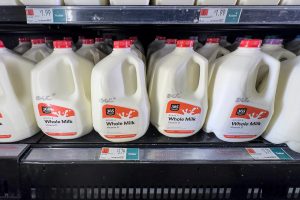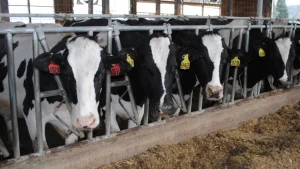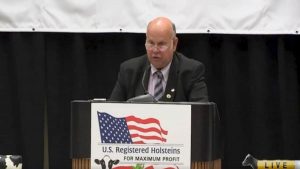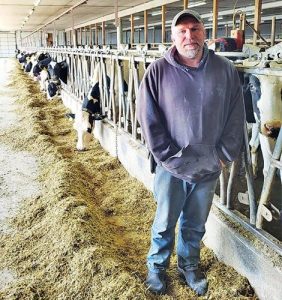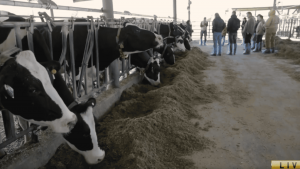
He previously milked 1,400 cows but has since ventured into robotics and decreased his herd size by 350 head.
Country Dairy is the home of a 1,050-cow Holstein farm and 19 A4 Astronaut robotic milking systems.
Eekhoff desired to find efficiencies because labour “was always a challenge” with his large herd.
He knew that to stay in the “ever-changing” dairying game; he had to become more efficient and more competitive, so he embraced robotics.
The dairy farmer explains: “With the Lely system, it allowed us to manage our cows differently. You can go on the system today and see every cow at every point in her lactation with real-time data from the cow.”
“It helps us to make decisions more effectively and more efficiently. When we were milking in the parlours before, we were milking 1,400 cows.”
“We were producing fewer gallons of milk per week than what we are at 1,050 cows with robots today.”
He said you must be willing to adapt and learn, accept robots’ ability and go in with an open mind. Milking robots offer increased flexibility and “you do not have to be in the parlour for 8 to 12 hours a day,” he commented.
He also believes that cows are now “happier and healthier” and “you cannot get any more consistency than we have got with the robots”.
“The robots are there every day. It milks the cows the same way every time she walks into there.”
Pushing production
Jason Henderson, herdsman at Country Dairy, says that “it is astronomical the number of cows we were milking compared to production”.
“The more than the cow can milk herself, and we can stay out of her life and let her do her thing; the more a cow milks, the more she is going to produce.”
“When you have a parlour set up, you run your cows through the parlour three times a day. That is all you are ever going to get, whereas there are cows here that will go 6 times a day and get 170lbs of milk a day.”
“It is their choice. If you are milking in a milking parlour and making so many pounds per cow, you have a potential 100lb per cow with fewer cows. It is all about feed intake and costs. Why feed 400 cows when you can feed 300 and get more production?” Henderson concluded.




